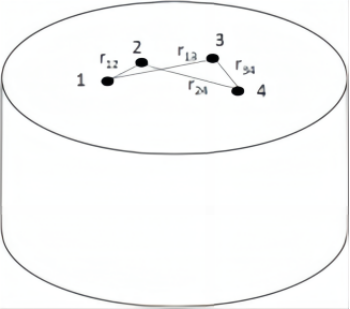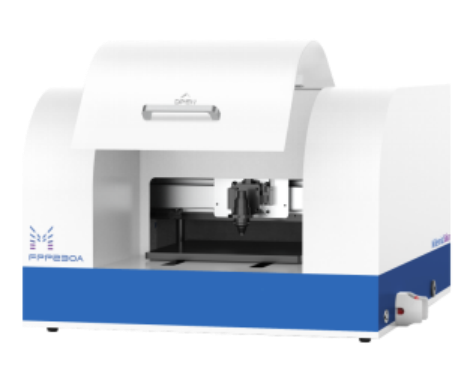
Quantum Efficiency Tester
PL/EL Integrated System
PV-Reflectumeter
3D Confocal Microscope
In-Line Four Point Probe Tester
Four Point Probe Tester
In-Line Thin Film Thickness Tester
Raman Spectrometer
FTIR Spectrometer
Spectrophotometer
Automatic Spectroscopic Ellipsometer
Contact Resistance Tester
Ultra depth of field 3D microscope
Auto Visual Tester
VMM PV Vision Measuring Machine
Solar Cell Horizontal Tensile Tester
Steady State Solar Simulator for Solar Cell
Solar Cell UV Aging Test Chamber
Solar Cell Comprehensive Tensile Tester
Visual Inspection Tester
Wet Leakage Current Tester
PV Module EL Tester
PV Module UV Preconditioning Chamber
Steady State Solar Simulator for PV Module
Current Continuous Monitor
Potential Induced Degradation Test
Bypass Diode Tester
LeTID Test System
Reverse Current Overload Tester
Impulse Voltage Tester
Hipot Insulation Tester
Ground Continuity Tester
Hipot Insulation Ground Tester
Damp Heat Test Chamber
Humidity Freeze Test
Thermal Cycle Test Chamber
Dynamic Mechanical Load Tester
Static Mechanical Load Tester
Hail Impact Tester
Robustness of Termination Tester
Module Breakage Tester
Cut Susceptibility Tester
Peel Shear Strength Tester
Universal Testing Machine (Single-arm)
Universal Testing Machine (Double-arm)
Glass Transmittance Tester
Acetic Acid Test Chamber
EVA Degree of Crosslinking Test System
Junction Box Comprehensive Tester
Drop ball tester
Semi-automatic scanning four-probe tester
Stylus Profilometer
Maximum Power Point Tracker
Perovskite Glass Transmittance Tester
Perovskite P1 Laser Scribing Multifunctional Testing Machine
Perovskite Online PL Tester
Perovskite Online Sheet Resistance Tester
Online Perovskite Film Thickness Tester
Perovskite Process Inspection Workstation
Portable IV Curve Tester
Portable EL Tester
Portable Thermal Imaging Tester
Solar Module Multi-Channel Testing System
PV Inverter Power Quality Tester
Drone EL Tester
IV Tester
IVEL Cell Sorting Machine
FPP230A Four Point Probe Tester: Professional Solution for Resistivity Measurement
Date : 2024-05-29Views : 275
Four Point Probe Tester is a device used to measure the sheet resistance of photovoltaic cell materials. Its working principle is based on four point probe technology. Four point probe technology calculates the resistivity of the sample by placing four probes on the surface of the sample and using the current between two of the probes and the voltage difference between the other two probes. Four Point Probe Tester FPP230A is a high-precision test equipment designed for the photovoltaic industry. Its design concept and technical features are mainly aimed at the measurement needs of silicon wafer resistivity in the photovoltaic industry. According to the information provided, this tester can quickly and automatically scan samples up to 230mm * 230mm to obtain square resistance/resistivity distribution information, which is crucial for evaluating the quality of solar cell materials.

Four Point Probe Production Process and Improvement
The design and manufacturing process of the Four Point Probe Tester probe head draws on the manufacturing process of mechanical watch movements. This reference is mainly reflected in the requirements for precision and stability. In the production process of the Four Point Probe Tester probe head, high-temperature epoxy casting of the cone head is a key step, which requires extremely high precision and stability to avoid casting leakage and voids.

Schematic diagram of resistivity measurement using the linear four point probe method
Performance: The improved Rymaszewski method automatically eliminates the influence of the longitudinal movement of the probe, and it is applied to the inclined square probe test method; on the basis of the inclined square four-probe mechanical platform, the hardware design and software programming of the entire test circuit are completed, and an inclined square probe analyzer with a constant current source with high precision and high stability is developed.
Material: The use of ruby bearings to guide tungsten carbide probes is an advantage. Ruby bearings can effectively support the stability of tungsten carbide probes at high speeds due to their excellent wear resistance and low friction properties, thereby improving the overall performance and life of the probe head. The choice of this material not only improves the functionality of the probe head, but also extends its service life. It is an innovative application that conforms to the development trend of modern precision instruments.
Four Point Probe Tester probe head draws on the manufacturing process of mechanical clock movements and uses ruby bearings to guide tungsten carbide probes to ensure high mechanical precision and long service life. The dynamic test repeatability (close to the real scene) can reach 0.2%, which is the industry-leading level.
Probe head parameters
Probe spacing: 1.00mm
Probe material: tungsten carbide
Probe pressure (optional): 3~5N (thin film)
Mechanical drift: < 0.3%
Bearing inner hole and probe spacing: < 6μm
Calculation of resistivity of semi-unbounded samples with sheet resistance
When measuring the sheet resistance of photovoltaic cell materials and calculating the resistivity of semi-unbounded samples, the four point probe method is a commonly used method for measuring sheet resistance. It calculates resistivity by measuring the current and voltage on two diagonals.
This method is suitable for samples of different thicknesses. For semi-unbounded samples, that is, samples whose boundary conditions are not completely defined, a method based on a mathematical model can be used to calculate the resistivity. When the sample thickness and the distance from the edge of the sample to the probe are much larger than the probe spacing, the sample under test can be considered to be a semi-unbounded sample. A point current source with an intensity of l is introduced by the probe on this semi-unbounded sample. If the material is uniform and isotropic, the current distribution is spherically symmetric, and the resulting equipotential surfaces are concentric spherical surfaces.

Schematic diagram of concentric spherical equipotential surfaces generated by a point current source in a semi-unbounded sample
The schematic diagram of resistance testing using an irregularly positioned four point probe on a semi-unbounded sample is shown in the figure below.

Points 1 and 4 are the locations of the current input and output probes, respectively, and points 2 and 3 are the locations of the voltage drop measurement probes. Points 1 and 4 can be regarded as point current sources, so the potentials of points 2 and 3 are

Four Point Probe Tester

E-mail: market@millennialsolar.com
● Maximum sample size 230 mm * 230 mm
●Quick, automatic scanning to obtain square resistance/resistivity distribution information at different locations
●Ultra-wide measurement range 1mΩ~100MΩ, covering most resistance measurement application scenarios
● Industry-leading dynamic test repeatability up to 0.2%
Four Point Probe Tester FPP230A has become an indispensable test equipment with its excellent design and technical advantages. It has industry-leading dynamic test repeatability, and the test repeatability close to the real scene is as high as 0.2%. In addition, its ultra-wide measurement range (1mΩ~100MΩ) makes it suitable for various resistance measurement application scenarios, including solar cells, semiconductors, alloys and conductive films. With FPP230A, the measurement of thin layer resistance of photovoltaic cell materials becomes more accurate and efficient, providing strong support for the quality assessment of photovoltaic materials.

































































